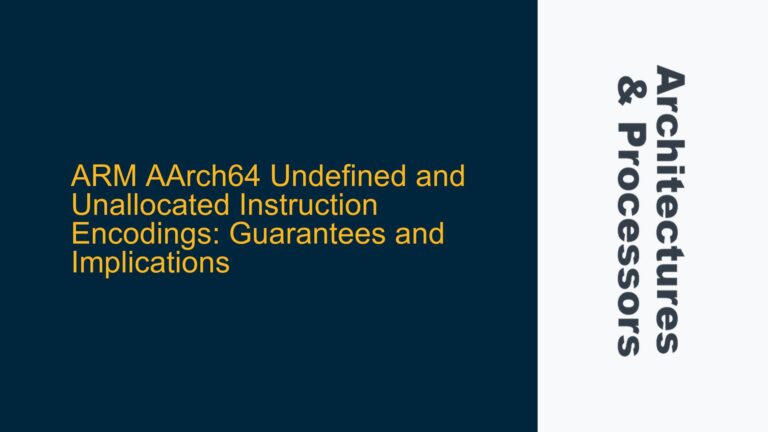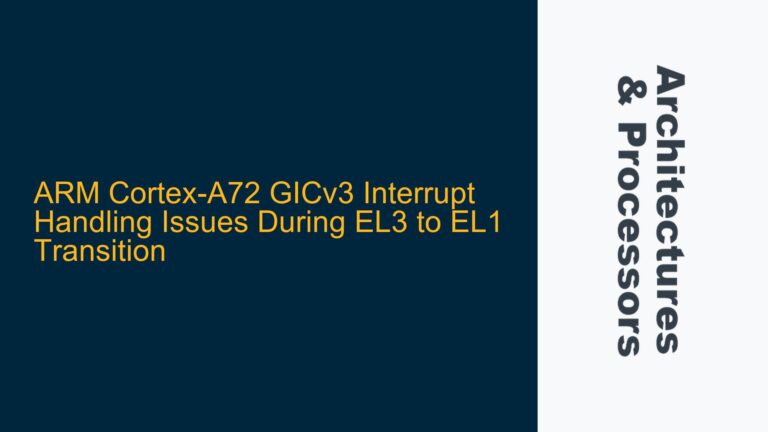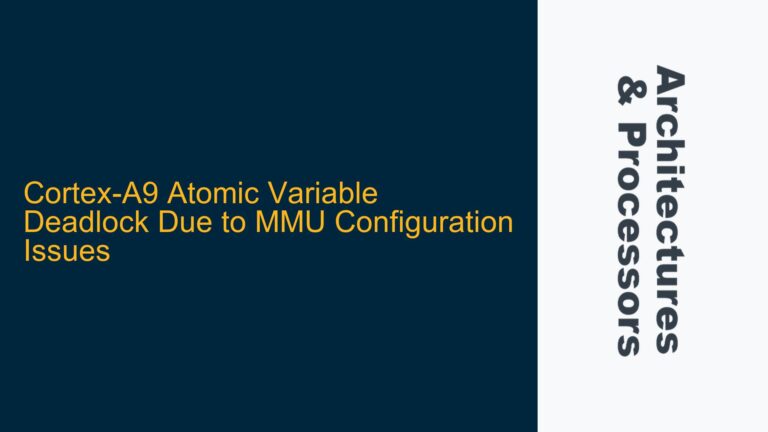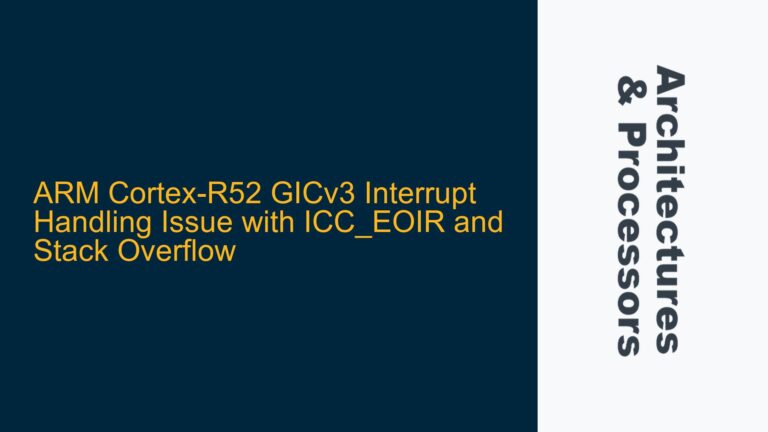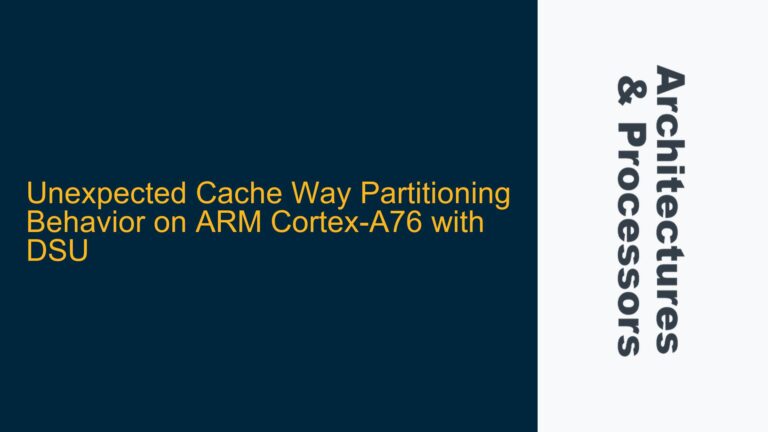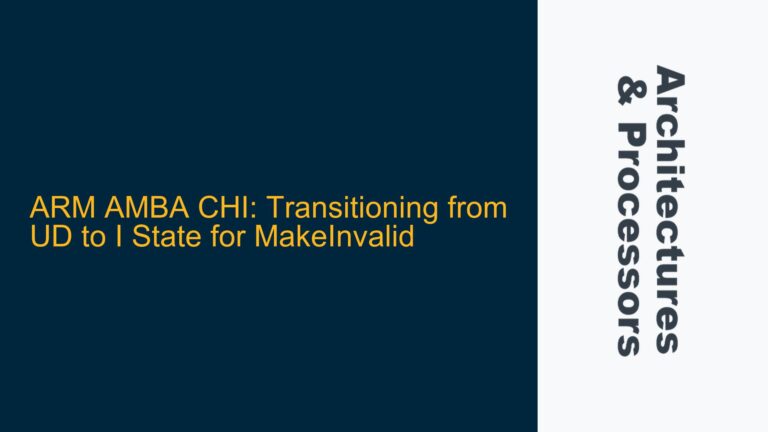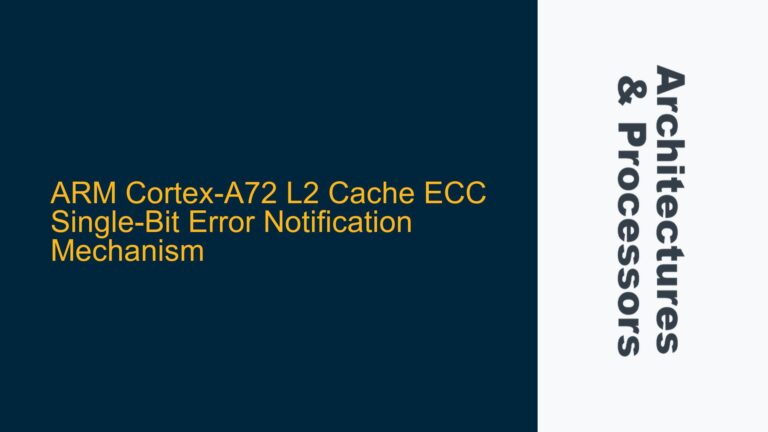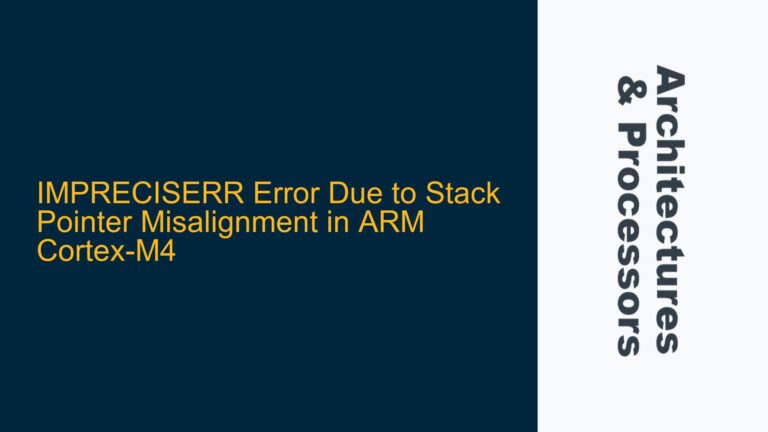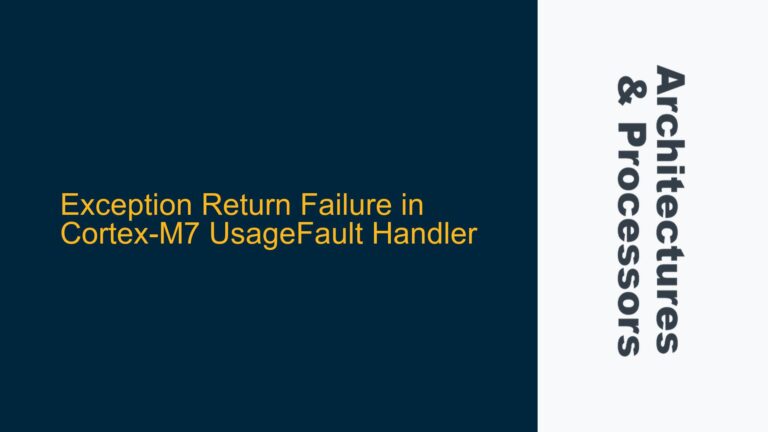ARM AArch64 Undefined and Unallocated Instruction Encodings: Guarantees and Implications
ARM AArch64 Instruction Encodings: UNDEFINED vs. Unallocated Behavior The ARM AArch64 architecture defines specific behaviors for instruction encodings that are either UNDEFINED or unallocated. These terms are critical for understanding how the processor handles invalid or reserved instruction patterns, and they have significant implications for software compatibility and forward compatibility across different versions of the…
